Abstract
Certain species or subspecies of anaerobic bacteria are isolated with higher frequency from female genital tract infections than from other anatomic sites. To gain susceptibility data more specific to the treatment of these infections, nine antimicrobial agents were tested by an agar dilution technique against 230 anaerobic bacteria isolated solely from obstetric and gynecological infections. These genital isolates were, in general, very susceptible to imipenem (most active, inhibiting all gram-negative rods at less than or equal to 1 microgram/ml), clindamycin (all isolates inhibited at less than or equal to 4 micrograms/ml), metronidazole (all gram-negative rods inhibited at less than or equal to 4 micrograms/ml), and chloramphenicol. Penicillin G had generally low activity against Bacteroides spp., not restricted to just the Bacteroides fragilis group, although it was very active against gram-positive species. Bacteroides bivius, a species uniquely common in female genital infections, was particularly resistant (90% MIC, 64 U/ml). Also, the Bacteroides melaninogenicus isolates were less susceptible than previously reported for isolates not exclusively from genital sites. Compared with moxalactam, cefotaxime, and cefoperazone, cefoxitin usually demonstrated equal or greater activity against most Bacteroides spp., with the exception of greater activity of moxalactam against B. fragilis (formerly subsp. fragilis). Resistance to moxalactam was observed among strains of Peptostreptococcus anaerobius, a common genital isolate. Overall, the activities of these four drugs were not as predictable as those observed for clindamycin, metronidazole, chloramphenicol, and imipenem.
Full text
PDF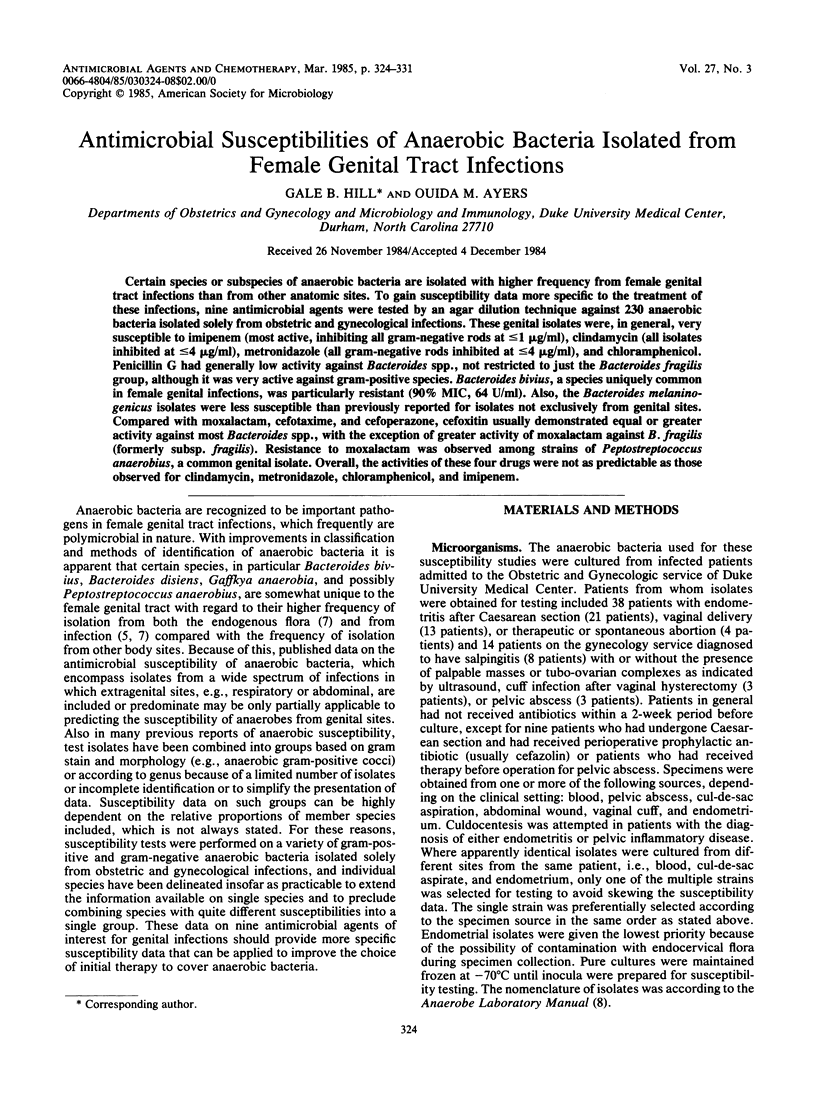
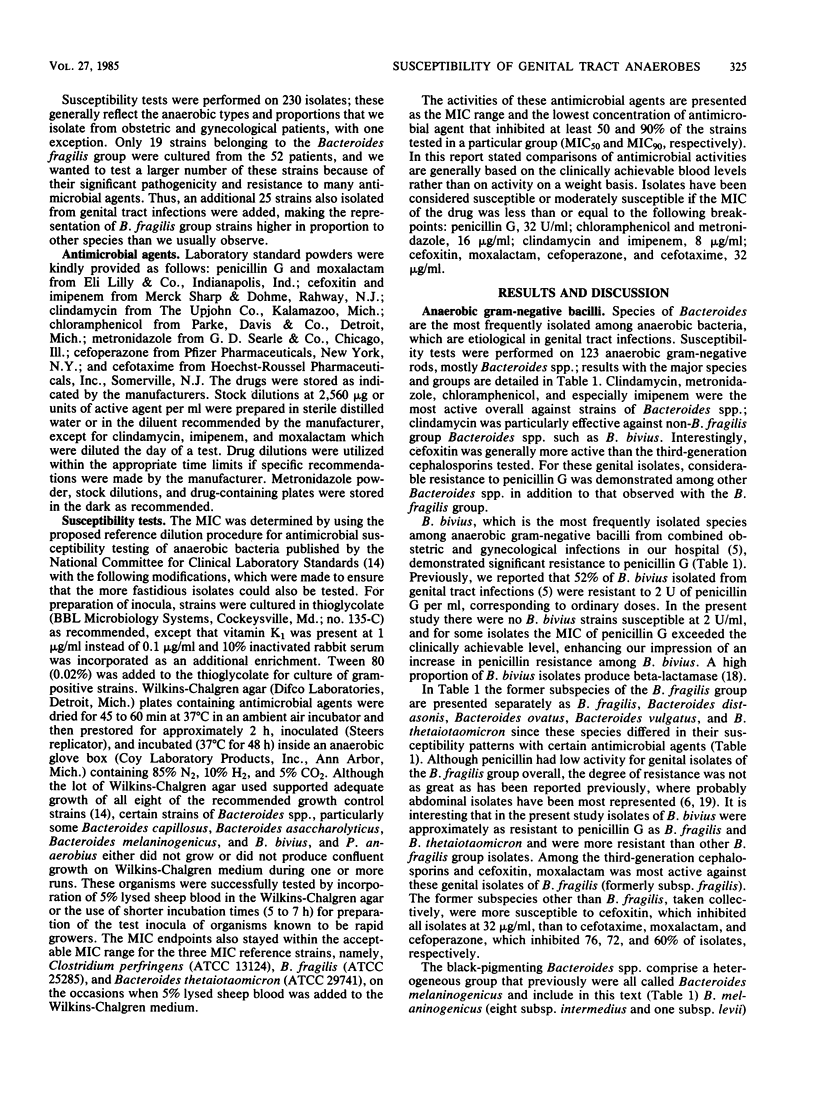
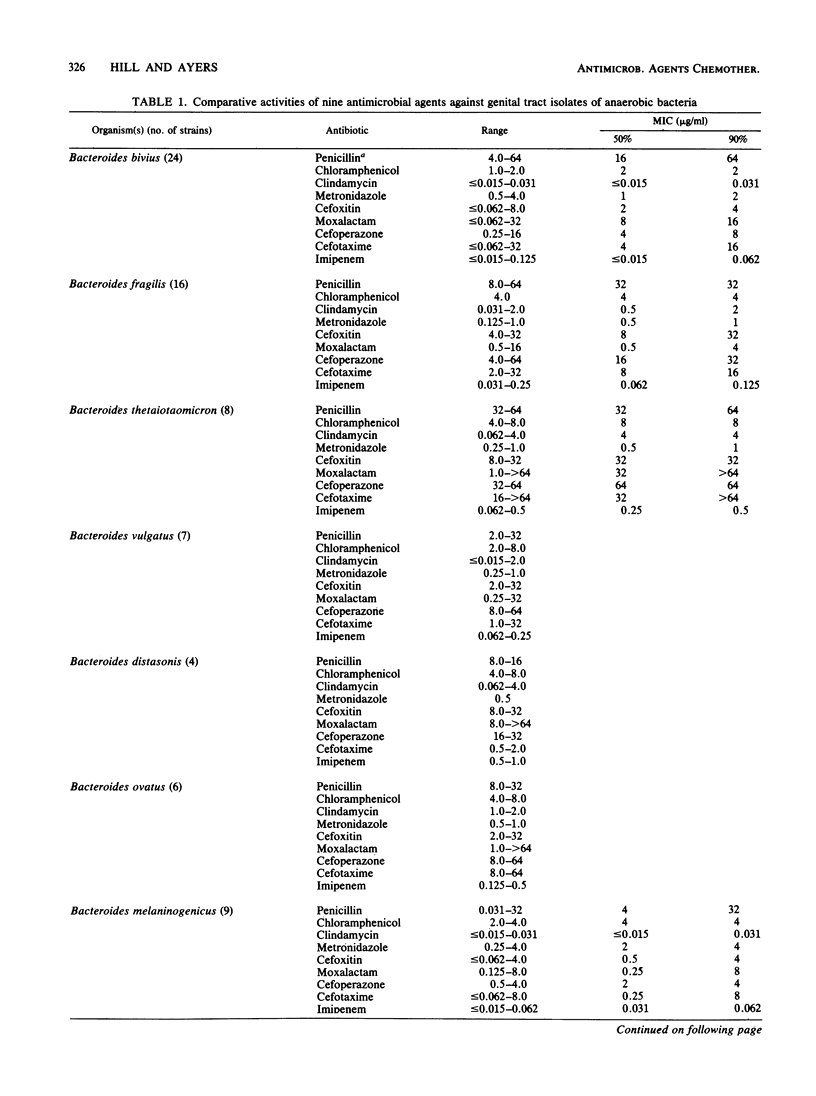
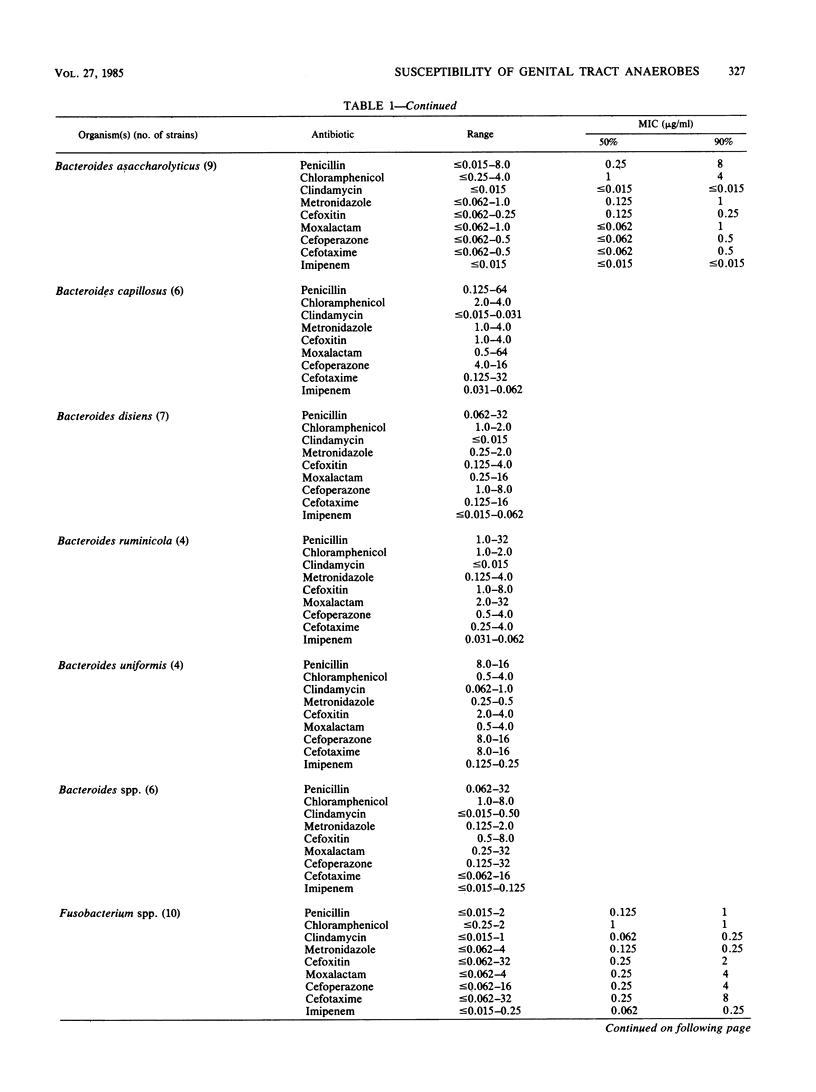
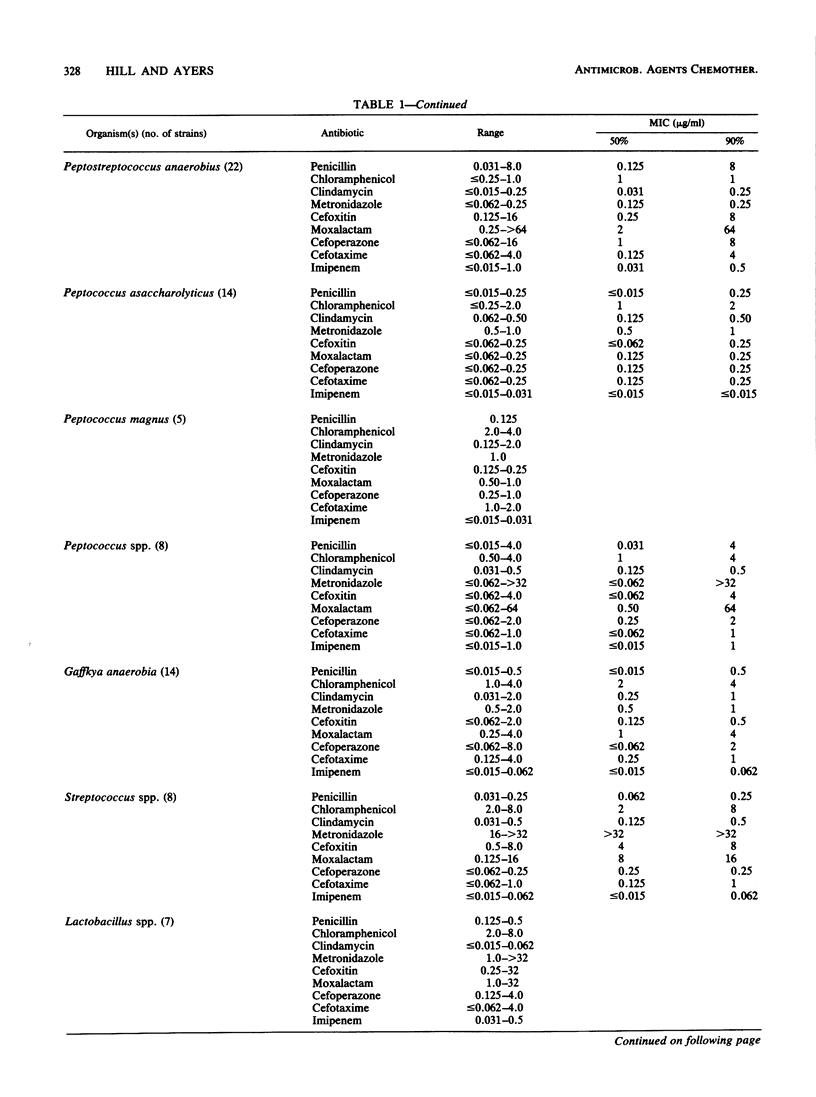
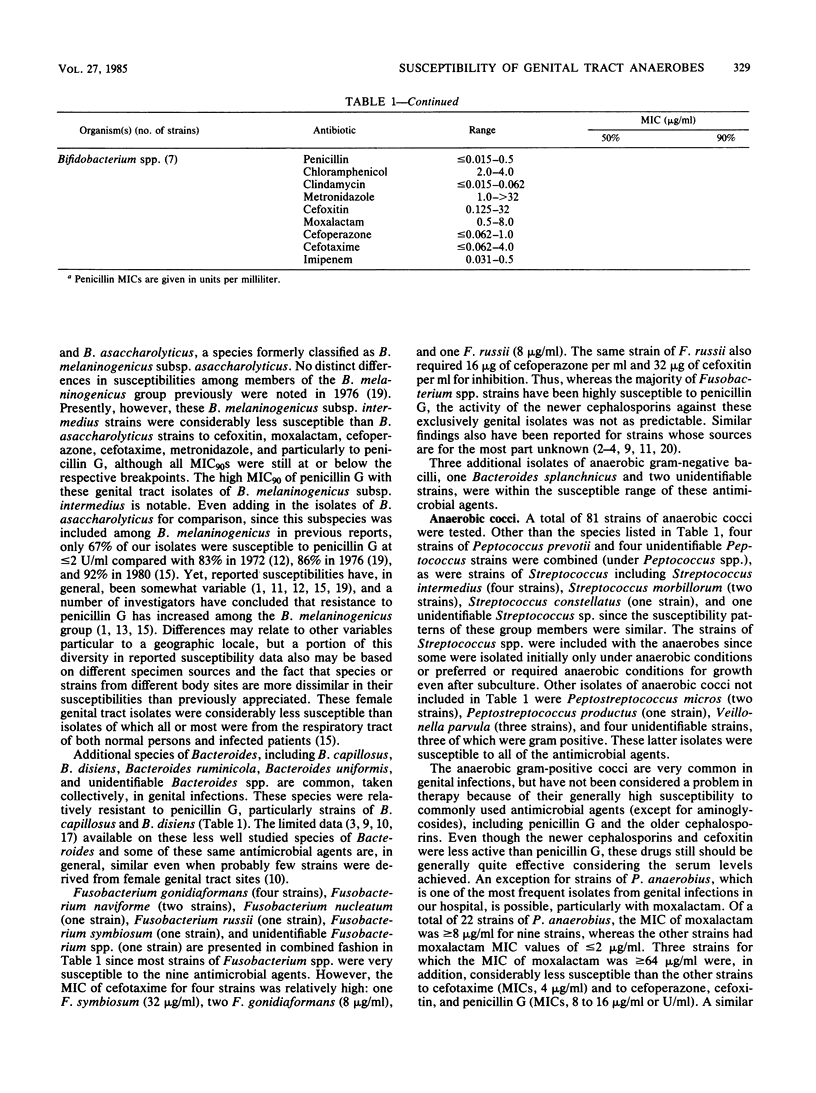
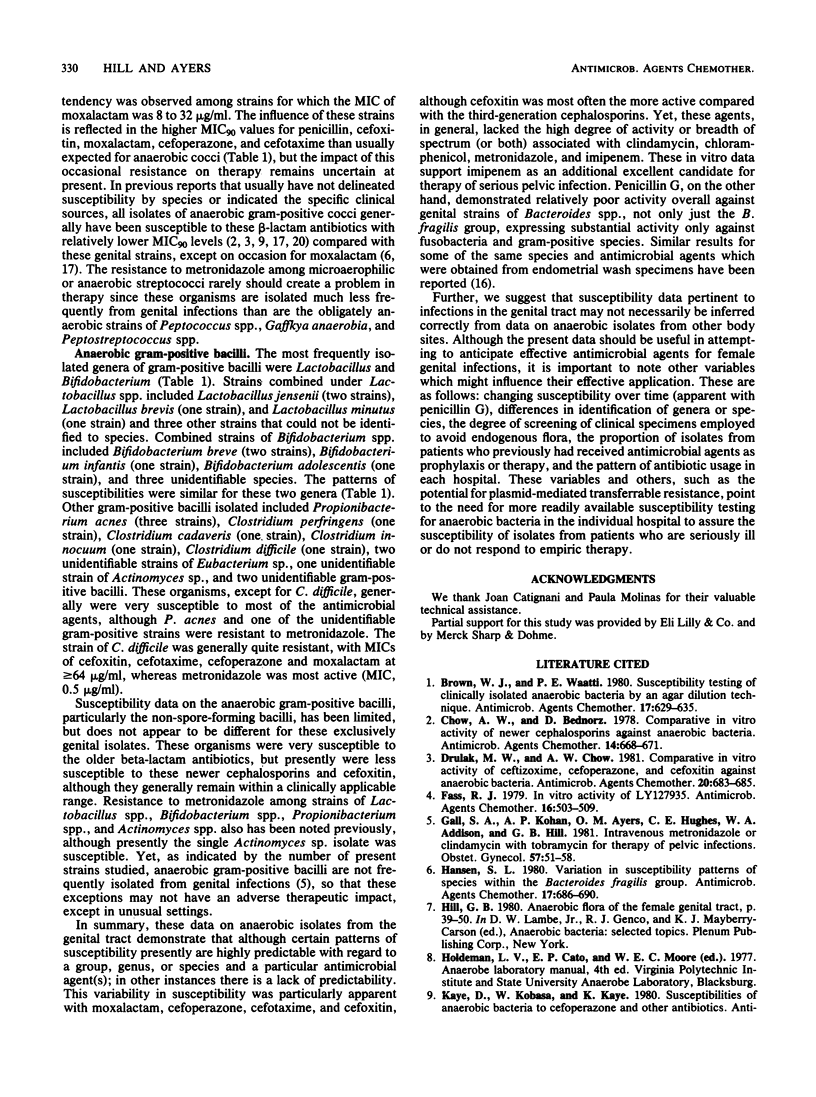
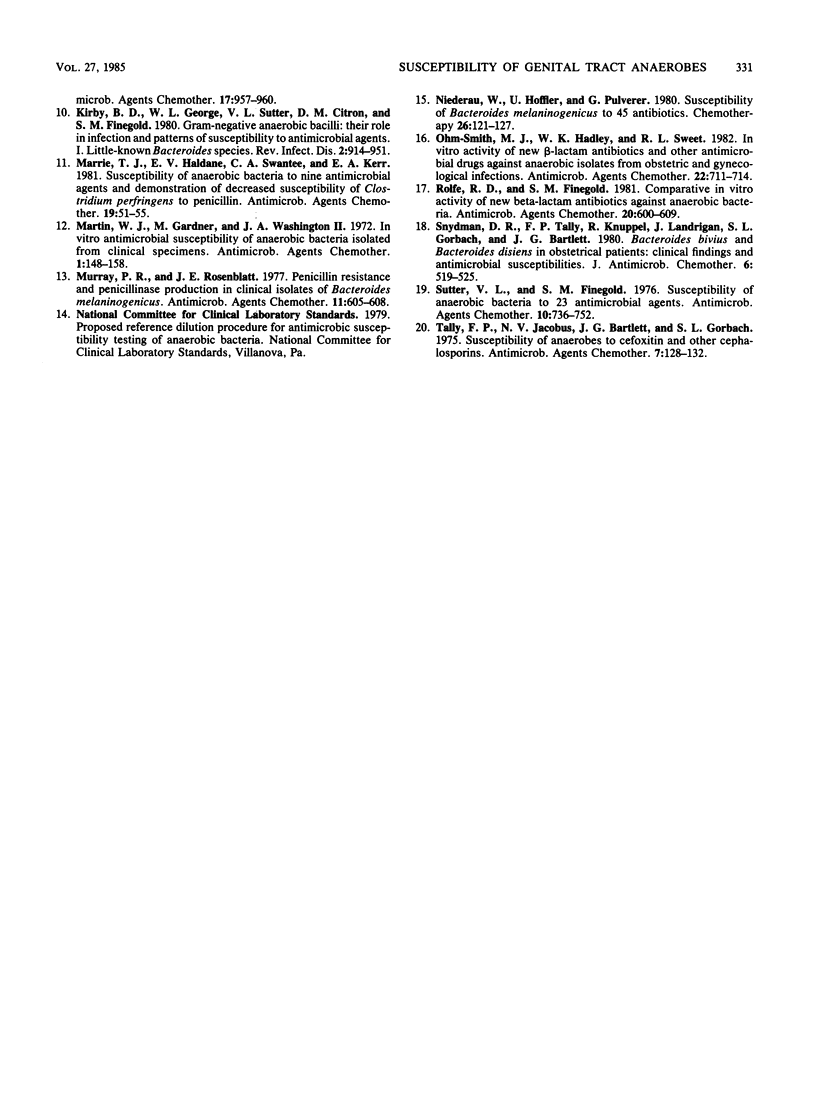
Selected References
These references are in PubMed. This may not be the complete list of references from this article.
- Brown W. J., Waatti P. E. Susceptibility testing of clinically isolated anaerobic bacteria by an agar dilution technique. Antimicrob Agents Chemother. 1980 Apr;17(4):629–635. doi: 10.1128/aac.17.4.629. [DOI] [PMC free article] [PubMed] [Google Scholar]
- Chow A. W., Bednorz D. Comparative in vitro activity of newer cephalosporins against anaerobic bacteria. Antimicrob Agents Chemother. 1978 Nov;14(5):668–671. doi: 10.1128/aac.14.5.668. [DOI] [PMC free article] [PubMed] [Google Scholar]
- Drulak M. W., Chow A. W. Comparative in vitro activity of ceftizoxime, cefoperazone, and cefoxitin against anaerobic bacteria. Antimicrob Agents Chemother. 1981 Nov;20(5):683–685. doi: 10.1128/aac.20.5.683. [DOI] [PMC free article] [PubMed] [Google Scholar]
- Fass R. J. In vitro activity of LY127935. Antimicrob Agents Chemother. 1979 Oct;16(4):503–509. doi: 10.1128/aac.16.4.503. [DOI] [PMC free article] [PubMed] [Google Scholar]
- Gall S. A., Kohan A. P., Ayers O. M., Hughes C. E., Addison W. A., Hill G. B. Intravenous metronidazole or clindamycin with tobramycin for therapy of pelvic infections. Obstet Gynecol. 1981 Jan;57(1):51–58. [PubMed] [Google Scholar]
- Hansen S. L. Variation in susceptibility patterns of species within the Bacteroides fragilis group. Antimicrob Agents Chemother. 1980 Apr;17(4):686–690. doi: 10.1128/aac.17.4.686. [DOI] [PMC free article] [PubMed] [Google Scholar]
- Kaye D., Kobasa W., Kaye K. Susceptibilities of anaerobic bacteria to cefoperazone and other antibiotics. Antimicrob Agents Chemother. 1980 Jun;17(6):957–960. doi: 10.1128/aac.17.6.957. [DOI] [PMC free article] [PubMed] [Google Scholar]
- Kirby B. D., George W. L., Sutter V. L., Citron D. M., Finegold S. M. Gram-negative anaerobic bacilli: their role in infection and patterns of susceptibility to antimicrobial agents. I. Little-known Bacteroides species. Rev Infect Dis. 1980 Nov-Dec;2(6):914–951. doi: 10.1093/clinids/2.6.914. [DOI] [PubMed] [Google Scholar]
- Marrie T. J., Haldane E. V., Swantee C. A., Kerr E. A. Susceptibility of anaerobic bacteria to nine antimicrobial agents and demonstration of decreased susceptibility of Clostridium perfringens to penicillin. Antimicrob Agents Chemother. 1981 Jan;19(1):51–55. doi: 10.1128/aac.19.1.51. [DOI] [PMC free article] [PubMed] [Google Scholar]
- Martin W. J., Gardner M., Washington J. A., 2nd In vitro antimicrobial susceptibility of anaerobic bacteria isolated from clinical specimens. Antimicrob Agents Chemother. 1972 Feb;1(2):148–158. doi: 10.1128/aac.1.2.148. [DOI] [PMC free article] [PubMed] [Google Scholar]
- Murray P. R., Rosenblatt J. E. Penicillin resistance and penicillinase production in clinical isolates of Bacteroides melaninogenicus. Antimicrob Agents Chemother. 1977 Apr;11(4):605–608. doi: 10.1128/aac.11.4.605. [DOI] [PMC free article] [PubMed] [Google Scholar]
- Niederau W., Höffler U., Pulverer G. Susceptibility of Bacteroides melaninogenicus to 45 antibiotics. Chemotherapy. 1980;26(2):121–127. doi: 10.1159/000237893. [DOI] [PubMed] [Google Scholar]
- Ohm-Smith M. J., Hadley W. K., Sweet R. L. In vitro activity of new beta-lactam antibiotics and other antimicrobial drugs against anaerobic isolates from obstetric and gynecological infections. Antimicrob Agents Chemother. 1982 Oct;22(4):711–714. doi: 10.1128/aac.22.4.711. [DOI] [PMC free article] [PubMed] [Google Scholar]
- Rolfe R. D., Finegold S. M. Comparative in vitro activity of new beta-lactam antibiotics against anaerobic bacteria. Antimicrob Agents Chemother. 1981 Nov;20(5):600–609. doi: 10.1128/aac.20.5.600. [DOI] [PMC free article] [PubMed] [Google Scholar]
- Snydman D. R., Tally F. P., Knuppel R., Landrigan J., Gorbach S. L., Bartlett J. G. Bacteroides bivius and Bacteroides disiens in obstetrical patients: clinical findings and antimicrobial susceptibilities. J Antimicrob Chemother. 1980 Jul;6(4):519–525. doi: 10.1093/jac/6.4.519. [DOI] [PubMed] [Google Scholar]
- Sutter V. L., Finegold S. M. Susceptibility of anaerobic bacteria to 23 antimicrobial agents. Antimicrob Agents Chemother. 1976 Oct;10(4):736–752. doi: 10.1128/aac.10.4.736. [DOI] [PMC free article] [PubMed] [Google Scholar]
- Tally F. P., Jacobus N. V., Bartlett J. G., Gorbach S. L. Susceptibility of anaerobes to cefoxitin and other cephalosporins. Antimicrob Agents Chemother. 1975 Feb;7(2):128–132. doi: 10.1128/aac.7.2.128. [DOI] [PMC free article] [PubMed] [Google Scholar]


